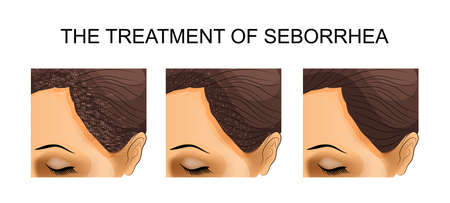Introduction to Keloid Scarring
Keloid scars, often misunderstood and sometimes overlooked, are more than just a cosmetic concern. These raised, fibrous growths result from an overactive healing process following skin injuries such as cuts, piercings, or even acne. Unlike ordinary scars, keloids can expand beyond the original wound, becoming persistent reminders of trauma. For many people living in Britain—especially those from diverse ethnic backgrounds—keloid scarring carries both physical discomfort and emotional weight. The impact on quality of life is significant: itching, tenderness, and self-consciousness can affect daily routines and social confidence. In a country as culturally rich as the UK, understanding keloid scarring is not simply a matter of medical curiosity; it’s essential for recognising how different communities may be disproportionately affected. With increasing awareness of genetic risk factors and the unique challenges faced by ethnic minorities, addressing keloid scars becomes an important aspect of inclusive healthcare and personal wellbeing.
2. The Genetic Risk: Ethnic Minorities and Keloid Susceptibility
Keloid scarring isn’t just a cosmetic concern—it’s a complex medical condition shaped by our genes, environment, and cultural background. In Britain’s vibrant, multicultural communities, the prevalence of keloids varies dramatically between ethnic groups. Understanding why this happens is key to providing sensitive and effective care.
Genetic studies have shown that people with darker skin tones are at considerably higher risk of developing keloid scars. This includes individuals from Black African, Afro-Caribbean, South Asian (including Indian, Pakistani, and Bangladeshi), and some East Asian backgrounds. In these populations, keloids can develop after even minor skin injuries, such as piercings or small cuts, and may be larger or more persistent compared to those in white British individuals.
Why Does Genetics Matter?
The inheritance pattern for keloid susceptibility is not straightforward but tends to run in families—if one or both parents are prone to keloids, their children are significantly more likely to experience them as well. Scientists believe this is due to variations in genes controlling collagen production and wound healing responses. These genetic differences mean that standard approaches to scar management may not always be equally effective across all ethnicities.
Ethnic Groups and Relative Keloid Risk in the UK
| Ethnic Group | Relative Risk of Keloids* | Commonly Affected Areas |
|---|---|---|
| Black African & Afro-Caribbean | 10-15x higher than White British | Ears, chest, shoulders |
| South Asian (Indian, Pakistani, Bangladeshi) | 5-10x higher than White British | Jawline, upper arms, chest |
| East Asian | Slightly elevated | Jawline, back |
| White British/European | Baseline risk | Ears (after piercing) |
*Relative risk figures based on epidemiological studies conducted in the UK.
Cultural Nuances and Community Awareness
Keloid risk is further influenced by cultural practices—such as traditional ear or nose piercings common in South Asian and African communities—which may inadvertently increase the likelihood of developing problematic scars. Thus, it’s vital for healthcare professionals in the UK to engage with patients from diverse backgrounds with empathy and knowledge about these unique risks.

3. Personal Stories: Living with Keloids in the UK
For many people of colour living in Britain, keloid scarring is more than just a medical condition—it’s an everyday reality that shapes both self-image and social experiences. I recently spoke to Amina, a British-Nigerian student from Manchester, who vividly recalls the anxiety she felt when her first keloid appeared after an ear piercing. “It was hard to find someone who understood what it meant for me—how it changed how I saw myself and how others looked at me,” she shares. Her story echoes throughout the UK’s diverse communities, where keloids often carry emotional weight far beyond their physical presence.
Among friends and family, these scars can become a point of conversation or even unwanted advice, leaving individuals feeling exposed or misunderstood. Ravi, a second-generation British-Indian, describes the frustration of being offered endless home remedies while simply wishing for empathy and acceptance. “People mean well but don’t see that it affects my confidence every time I look in the mirror,” he explains. In many British towns and cities, people like Ravi navigate both the visible effects of keloids and the invisible pressures to ‘fix’ them.
The aesthetic challenges are particularly acute in a society that values clear skin as a sign of health and beauty. For some, covering up becomes routine—choosing clothing and hairstyles to conceal scars during important events or job interviews. Others find empowerment in embracing their natural appearance, but the journey is rarely straightforward. Community support groups across London and Birmingham have become vital spaces for sharing experiences and practical advice, as well as fostering a sense of belonging among those who might otherwise feel isolated.
It’s clear that living with keloids in Britain involves navigating not only personal insecurities but also cultural expectations around appearance and identity. For ethnic minorities especially, these stories remind us that addressing keloid scarring isn’t just about treatment—it’s about understanding lived experience, building compassion, and celebrating resilience in the face of visible difference.
4. Current Treatments: What Works and What Doesn’t
When it comes to managing keloid scarring, especially for ethnic minorities in Britain who face a higher genetic risk, the options available through the NHS and private clinics are varied—each with its own set of benefits and drawbacks. Here’s an honest look at what’s on offer and how these interventions align with real-life experiences within the British healthcare system.
NHS Treatments: Accessibility and Limitations
The NHS offers several standard treatments for keloids, but their effectiveness can be inconsistent, particularly for those with darker skin tones who may have more aggressive scar responses. Below is a summary of NHS treatments:
| Treatment | How It Works | Benefits | Limitations |
|---|---|---|---|
| Steroid Injections | Reduces inflammation and flattens scar tissue | Widely available; non-invasive; reduces itchiness/pain | Multiple sessions needed; recurrence common; skin thinning possible |
| Silicone Gel Sheets | Creates a moist environment over scar to soften tissue | Painless; can be used at home; no downtime | Requires daily use over months; variable results; may not suit all lifestyles |
| Cryotherapy | Freezes scar tissue to reduce size | Effective on small/newer keloids; minimally invasive | Less effective on older/larger scars; risk of pigmentation changes (especially in darker skin) |
| Surgical Removal | Keloid is cut out surgically under local anaesthetic | Immediate reduction in size/appearance; option for very large keloids | High recurrence rate (often worse); best combined with other therapies post-op |
| Pressure Therapy/Ear Clips (for ear keloids) | Applies consistent pressure to prevent regrowth after excision | Simple, non-invasive adjunct after surgery | Mainly for earlobe keloids; requires long-term adherence (months); discomfort possible |
Private Sector Options: Expanding the Arsenal—but at a Cost
If you’re seeking alternatives not routinely offered by the NHS or want faster access, private clinics provide advanced treatments such as laser therapy and bespoke combination protocols. However, these come with significant financial considerations and varying levels of evidence supporting their effectiveness.
| Treatment | Main Features | Pros & Cons in British Context |
|---|---|---|
| Laser Therapy (e.g. Pulsed Dye Laser) | Targets blood vessels to reduce redness and size | Pro: Can improve appearance, especially colour; Con: Multiple sessions needed, expensive, risk of pigmentation changes for darker skin types |
| Radiotherapy (Post-Surgery) | Lowers recurrence rates after surgical removal | Pro: Best evidence for preventing regrowth; Con: Not suitable for everyone due to side effects/long-term risks; limited availability outside specialist centres |
A Personal Reflection on Navigating Choices in the UK System
I’ve spoken to many individuals from diverse backgrounds who’ve found the NHS pathway frustratingly slow or felt their concerns were minimised. Private care, while promising speed and innovation, can feel financially out of reach—especially as multiple sessions are often required. Ultimately, no single treatment offers a guaranteed solution. The best outcomes often arise from combining therapies and working closely with practitioners familiar with ethnic skin variations—a factor still evolving within UK dermatology practice.
The Takeaway: Realistic Expectations and Holistic Care Matter Most
If you’re considering treatment for keloid scarring in Britain, it’s essential to balance hope with realism. While there are more options than ever, persistent advocacy for your needs—and culturally competent care—remains key. As awareness grows about the unique challenges faced by ethnic minorities, so too does the potential for truly tailored interventions that blend science with empathy.
5. Tailored Interventions: Culturally Sensitive Approaches
Within Britain’s wonderfully diverse communities, addressing keloid scarring among ethnic minorities requires a uniquely sensitive and informed approach. Understanding that genetic predispositions to keloid formation vary across populations, healthcare professionals must move beyond a “one-size-fits-all” mentality. Instead, culturally aware healthcare is essential—not just for effective prevention and treatment, but also for building trust and respect with those most affected.
Prevention Rooted in Cultural Awareness
Prevention begins with education, but it must be delivered in ways that resonate with the lived experiences of ethnic minorities in Britain. From community workshops led by trusted local figures to multilingual leaflets in GP surgeries, information about keloid risk factors, wound care, and early intervention should be accessible and relevant. Emphasising gentle skincare techniques traditional to certain cultures—or adapting advice around haircare practices—can make guidance more practical and likely to be followed.
Innovative Treatments Informed by Diversity
The latest treatments for keloids, from silicone gels to laser therapy and corticosteroid injections, are most effective when tailored to an individual’s skin type and genetic background. For people of African, Caribbean, South Asian, or East Asian descent—groups statistically more prone to keloids—a personalised approach is vital. Clinicians who understand these nuances can select interventions less likely to cause pigment changes or further scarring, thereby enhancing results and confidence for their patients.
Holistic Support Services
Keloid scarring can have profound effects on self-esteem and emotional wellbeing. That’s why holistic support services—such as culturally attuned counselling, peer support groups, or collaborations with community leaders—are so important. By acknowledging the unique challenges faced by ethnic minorities, including potential stigma or misunderstandings about skin conditions within some families or communities, the NHS and allied services can provide genuine comfort and empowerment alongside clinical care.
Culturally sensitive approaches are not simply an added extra—they are central to delivering equitable healthcare in Britain today. When prevention strategies, innovative treatments, and ongoing support reflect the real lives of those they serve, we see not only better medical outcomes but stronger communities where everyone feels seen and understood.
6. Bridging the Gap: Community Outreach and Awareness
In Britain, where diversity weaves through every community, grassroots initiatives are increasingly stepping up to bridge the gap in keloid scarring awareness—especially for ethnic minorities who face heightened genetic risk. Local charities and support groups, often led by individuals with lived experience, have begun to create welcoming spaces for open conversations about keloid formation, emotional wellbeing, and practical care strategies.
The Power of Grassroots Initiatives
Grassroots projects such as pop-up health workshops in community centres across Birmingham, London, and Manchester invite people from African, Caribbean, and South Asian backgrounds to share stories and access resources in a culturally sensitive setting. These events don’t just demystify keloid scarring; they also empower participants to advocate for their own health needs during GP appointments or when seeking referrals to dermatology specialists.
NHS Outreach: Tailored Support for High-Risk Groups
The NHS has recognised the importance of tailored outreach. In collaboration with local councils and faith-based organisations, targeted campaigns now provide multilingual leaflets and host Q&A sessions led by clinicians familiar with the unique challenges faced by minority communities. There’s an increasing push for accessible information on treatment options—such as silicone gel sheets or steroid therapy—as well as referral pathways that take into account cultural sensitivities and language barriers.
Building Long-Term Trust and Engagement
Ultimately, these joint efforts aim to foster trust between healthcare providers and communities historically underserved in dermatological care. By engaging respected community leaders and providing ongoing education—not just one-off interventions—the hope is to normalise conversations around keloid prevention and management. This kind of holistic outreach is vital in ensuring all individuals across Britain feel seen, supported, and empowered to make informed choices about their skin health.

